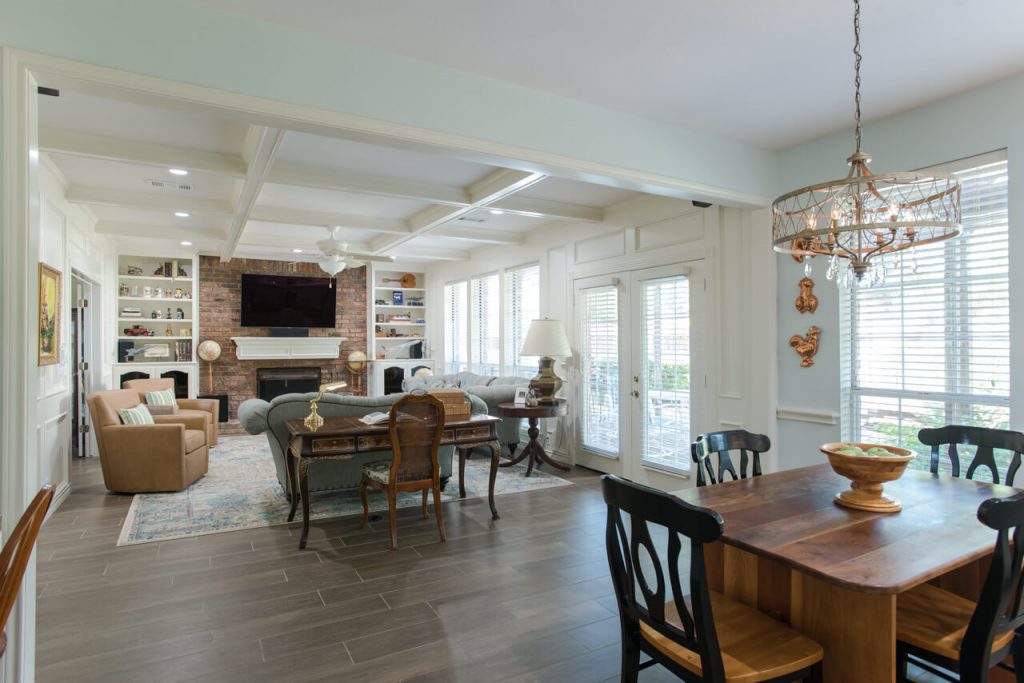
While it is common to think about home improvements as an annual expense, the fact is that some projects have very low return on investment. While some of these projects are sentimental, others are unavoidable. There are many investment calculators that can help you decide which projects will give you the best return on your investment. These are just a few examples of high ROI projects: sidings, roofs and windows.
In percentage terms, the return-on-investment (ROI) of a home improvement project can be expressed. A 100 percent return on investment means you have recouped your entire investment. Zero percent ROI indicates that you did not spend any money. The market trends and the type of project determine the exact percentage. However, the most lucrative investment areas are usually kitchens, bathrooms, family rooms, and other spaces. A major bathroom renovation will typically yield a return of 58.6%. After spending an average of $1355,547, a major remodel to a kitchen will result in a 53.9% return.

Your home's value can be increased to improve your ROI. Home improvements not only add value to your property, but they can also improve its resaleability potential. You won't have to make any home improvements if you don't do them. A real estate agent will also be able to help you track the return on investment and suggest ways to improve your home's appeal.
Your home improvement ROI could reach up to 80%. If your ROI is less than a year, you might want to consider a project that increases the heated square footage. Many homeowners find that adding functional space to their home will increase its ROI. Basement renovations are a great way to increase security and efficiency in your home. A smart remodel can help you sell your house. Consider your ROI and all the benefits you will get from an improvement project. You may be surprised at how much your money can buy.
The home renovation ROI is extremely high. The most lucrative projects can increase the home's market value. The costs of renovations can make homes more attractive to buyers, even though they are costly. A renovation costs anywhere from 2% - 103%. You can increase the value of your house by doing so. This will help increase your property’s value by as high as 8%. It's important to calculate the return on investment if you intend to sell your house.

Home improvement projects can increase the value of your home. Some projects can double the property's value. Depending on the type of home improvement, you can maximize your return on investment by making it more marketable. Some projects can increase the value of your home by as much as 96%. Making minor changes to your home can help you recoup your investment.
FAQ
How do you make a house look new?
Here are some tips to help you renovate your home without spending too much money.
-
A budget plan should be created
-
Find out what materials are required
-
You must decide where to place them
-
You will need to make a list of the things that you must buy.
-
Determine how much money you have
-
Plan your renovation project
-
Start working on your plan
-
Do your research online
-
Ask friends and family for help
-
Get creative
Is it better to hire either a general or subcontractor?
It is more expensive to hire a general contractor than to subcontract. General contractors have many employees so often charge their clients a high amount for labor costs. Subcontractors, on the contrary, hire one employee and charge less per hour.
How important is it that you are preapproved for a loan?
It's important to be pre-approved for mortgages. This will allow you to determine how much money you can borrow. It helps you to determine if your loan application is eligible.
Statistics
- Rather, allot 10% to 15% for a contingency fund to pay for unexpected construction issues. (kiplinger.com)
- Most lenders will lend you up to 75% or 80% of the appraised value of your home, but some will go higher. (kiplinger.com)
- ‘The potential added value of a loft conversion, which could create an extra bedroom and ensuite, could be as much as 20 per cent and 15 per cent for a garage conversion.' (realhomes.com)
- According to the National Association of the Remodeling Industry's 2019 remodeling impact report , realtors estimate that homeowners can recover 59% of the cost of a complete kitchen renovation if they sell their home. (bhg.com)
- It is advisable, however, to have a contingency of 10–20 per cent to allow for the unexpected expenses that can arise when renovating older homes. (realhomes.com)
External Links
How To
How can I plan a complete house remodel?
Planning a whole house remodel requires careful planning and research. Before you start your project, there are many factors to consider. It is important to determine what type of home improvements you are looking to make. There are many categories that you could choose from: kitchen, bathroom or bedroom; living room or dining room. After you decide which category you want to work on, figure out how much you can afford to spend on the project. If you do not have any previous experience in working with homes, it is best that you budget at least $5,000 per bedroom. If you have experience, you may be able to manage with less.
Once you have established how much you are able to afford, you will have to decide on how big a job to do. If your budget only allows for a small renovation of your kitchen, you will be unable to paint the walls, replace the flooring or install countertops. On the other hand, if you have enough money for a full kitchen renovation, you can probably handle just about anything.
Next, you need to find a contractor who is experienced in the type project that you want. This will guarantee quality results, and it will save you time later. After you have selected a professional contractor, you can start to gather materials and supplies. You might need to make everything from scratch depending upon the size of your project. There are many stores that offer pre-made products so it shouldn't be difficult to find what you need.
Once you've gathered the supplies needed, it's now time to start planning. To begin, draw a sketch of where you would like to place furniture or appliances. The next step is to design the layout of the rooms. You should leave enough space for electrical outlets and plumbing. You should also place the most frequently used areas closest to the front door, so visitors have easy access. Finally, you'll finish your design by deciding on colors and finishes. Keep your designs simple and in neutral tones to save money.
Once you have completed your plan, it is time to begin building. Before you start any construction, be sure to check the local codes. Some cities require permits while others allow homeowners to build without one. First, remove all walls and floors. The next step is to lay plywood sheets on your new flooring. Then, you'll nail or screw together pieces of wood to form the frame for your cabinets. You will attach doors or windows to the frame.
You'll need to finish a few final touches once you're done. You might want to cover exposed pipes or wires. This can be done with plastic sheeting and tape. It's also a good idea to hang mirrors and photos. Make sure to keep your work area neat and tidy.
This guide will show you how to create a functional, beautiful home. It will also save you a lot of money. Now that you know how to plan a whole house remodeling project, you can go ahead and get started!